Snoopy Garden (스누피가든)
6.0 Km 0 2024-03-20
930 Geumbaekjo-ro, Gujwa-eup, Jeju-si, Jeju
+82-64-903-1111
Snoopy Garden House is where visitors can meet Snoopy and friends from the popular American comic series "Peanuts." The themed halls designed under the overall theme of "Peanuts, Nature & Life" allows one to connect their everyday life through episodes from "Peanuts." Snoopy Garden House has a total of five themed halls and Peanuts Store.
Dotoreum Parasitic Cone (돛오름(돝오름))
6.0 Km 1 2023-12-22
San 3, Songdang-ri, Gujwa-eup, Jeju-si, Jeju-do
This oreum, or parasitic cone, is located southwest of Bijarim Forest. Its name “Dot” comes from the Jeju dialect for pig, as the shape of the peak is said to resemble a pig. Dotoreum Parasitic Cone is home to a wide variety of trees and plants, but among them, it is most well-known for its bija trees. However, paths in this parasitic cone tend to be rather narrow and rugged, so one must prepare accordingly in order to climb the hill without much trouble. Visitors are advised to prepare comfortable shoes and water at the very least.
Bunker des Lumières (빛의 벙커)
6.3 Km 1 2023-06-10
2039-22, Goseong-ri, Seogwipo-si, Jeju-do
+82-1522-2653
An old bunker, which had once been a state-owned key communications facility, was reborn as Bunker des Lumières after being sold to a private group in 2012. Bunker des Lumières is an immersive media art project formed with the concept of art regeneration that integrates art, technology and music. Masterpieces of world-famous artists like Gustav Klimt and Vincent van Gogh are presented through projection mapping technology as a new way to approach and enjoy art. Immersive media art provides the experience of being not only visually but also synaesthetically immersed in art, thus helping the audience to easily understand and enjoy various artworks. Fast-paced videos backed up with magnificent music are also an element that cannot be left out of immersive media art. The venue turned a neglected space into an exhibit so it also serves the function of urban regeneration. It is exciting to peruse an artist's life and their world of art through a film-like video.
Darangswi Oreum (Wollangbong Peak) (다랑쉬오름(월랑봉))
6.9 Km 15307 2020-05-06
San 6, Sehwa-ri, Jeju-si, Jeju-do
+82-64-740-6000
Located the Northeastern part of Jeju Island, Darangswi Oreum is a parasitic volcano that stands about 380 meters above sea level. From Darangswi Oreum, visitors can overlook tourist attractions such as Seongsan Ilchulbong (Sunrise Peak), Udo Island, Hallasan Mountain, coastlines, and various parasitic cones.
The mountain has an oval shape from south to north with a steep incline. The top has a large, deep funnel-shaped crater that still preserves its original shape unlike craters in cones. The name Darangswi is derived from the fact that the mountain looks like a moon ('Da' meaning 'Moon' and 'Swi' meaning 'Mountain' in the Jeju dialect).
Trees are scattered here and there at the top, and the outskirts of the mountain are decorated with cedar trees. Meadow plants such as Aster yomena populate most of the mountain. A gentle hill to the right of Darangswi Oreum is called Akkeun Darangswi Oreum (also called Sowol Nangak). Meaning 'small,' 'Akkeun' is both old Korean and Jeju dialect.
Darangswi Oreum hosts Wollang Peak Sunrise Festival every year allowing visitors to see the spectacular full moon from the crater. There are wooden stairs in place for easy ascent, and the mountain is also a popular site for paragliders.
Sinpung Sincheon Seaside Ranch (신풍 신천 바다목장)
7.0 Km 22970 2021-09-15
5417, Iljudong-ro, Seogwipo-si, Jeju-do
+82-64-740-6000
Jungsangangil Road, part of the Jeju Olle Trail, stretches 14 kilometers, and has a calm ambience. Old stone walls and dense trees line both sides of the road. The road also leads to Seaside Ranch Road, which is open to the public. The road is a unique location on Jeju with expansive green fields located next to the ocean.
Savzak (사부작)
7.4 Km 0 2024-01-11
3361-20 Beonyeong-ro, Pyoseon-myeon, Seogwipo-si, Jeju-do
Savzak serves a course meal carefully prepared with seasonal ingredients, with only a course menu, “Savzak.” It consists of six to seven dishes, including Jeju pork and radish soup; Damajjim, a dish of steamed seafood and pork; sweet and sour eggplant; grilled pollack roe; and skewers. Customers can enjoy diverse, high-quality dishes made with fresh ingredients and traditional Jeju liquors, such as omegi and gosori liquors. As it only accepts eight to ten customers daily, it operates on a reservation system. For same-day reservations, it is advised to check availability by phone before visiting.
Songdangnamu (송당나무)
8.1 Km 2912 2024-02-21
68-140 Songdang 5-gil, Gujwa-eup, Jeju-si, Jeju-do
Songdangnamu is a gardening café where visitors can enjoy flowers in a spacious garden. Songdang-ri, known for its abundant rainfall, is recognized as a neighborhood conducive to plant growth, making it popular for landscaping cultivation. The café features a greenhouse filled with various plants such as herbs, palm trees, and catcus, as well as an outdoor garden spanning over 5,300 square meters. The signature menu item is the hallabong ade.
Bijarim Forest (비자림)
8.3 Km 38829 2023-11-06
55, Bijasup-gil, Jeju-si, Jeju-do
+82-64-710-7912
Designated and protected as a Natural Monument, Bijarim Forest is home to 2,800 bija trees, ranging from 500 to 800 years in age, spread over 448,165㎡ land area. These majestic trees range from 7-14 meters in x_height, 50-110 centimeters in diameter, and 10-15 meters in crown x_width, so this forest is quite a rare example of its kind in the world. The berries of bija trees were used widely as a medicine used to kill parasites, while the wood was used to make premium furniture and go boards. Forest bathing in a bija forest helps to combat arteriosclerosis, mitigate physical and psychological fatigue, and restore the body’s rhythm.
Seopjikoji (섭지코지)
8.3 Km 179214 2023-01-18
107, Seopjikoji-ro, Seogwipo-si, Jeju-do
+82-64-740-6000
Seopjikoji gets its name from its shape, jutting out to sea, with 'koji' being the Jeju dialect for a cape. Located just south of Seongsan Ilchulbong Tuff Cone, the cape is a popular tourist attraction. The tuff cone along with a beautiful vista of the ocean and fields of canola flowers can easily be seen from the peak of Seopjikoji. On top of the hill stands a beacon fire station, reaching 4 meters in x_height with a diameter of 9 meters, built using volcanic rocks. Behind the beacon fire station is Bulgeunoreum Volcanic Cone, vibrant with red soil. The white lighthouse atop the cone stands out in contrast. Seopjikoji has been used as a filming site for many Korean movies and dramas.
Sinyang Seopji Beach (신양 섭지해수욕장)
8.3 Km 34156 2022-08-10
107, Seopjikoji-ro, Seogwipo-si, Jeju-do
+82-64-740-6000
Sinyang Seopji Beach is not yet a popular tourist attraction, leaving the fine-grained, sandy beach relatively untouched. Thanks to its quiet atmosphere, the beach gives visitors a calmer, more secluded beach experience than some of the larger beaches on Jeju.
The 80-meter-wide, crescent-shaped beach stretches for a total length of 300 meters. Bordered by waters that are only an average of one meter deep, the beach gently slopes at a five degree angle. Known for its small waves, the beach is the perfect spot for children.
Windsurfing is available nearby and popular tourist attractions such as Seongsan Ilchulbong Tuff Cone and Seopjikoji are located in the area.

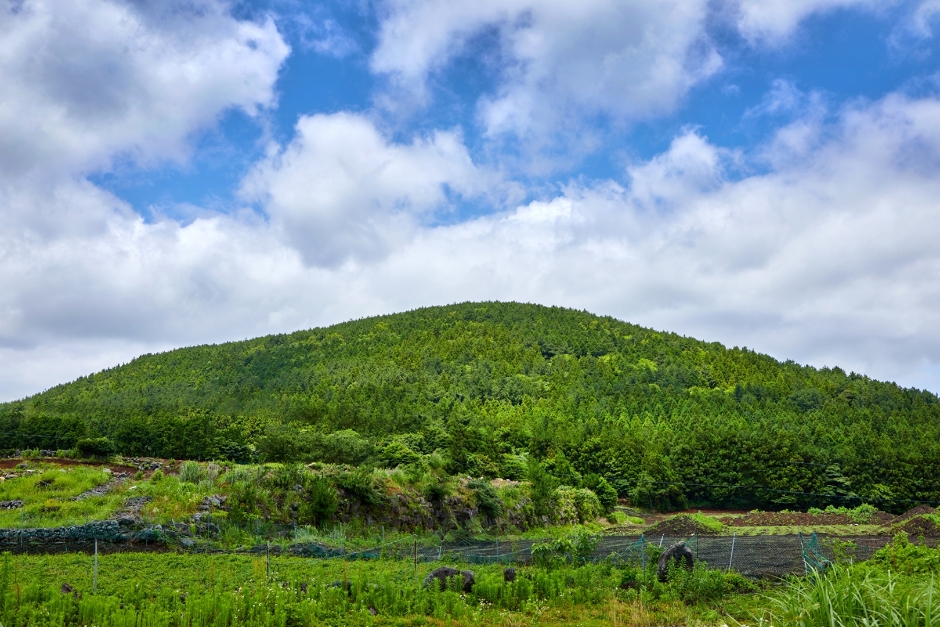
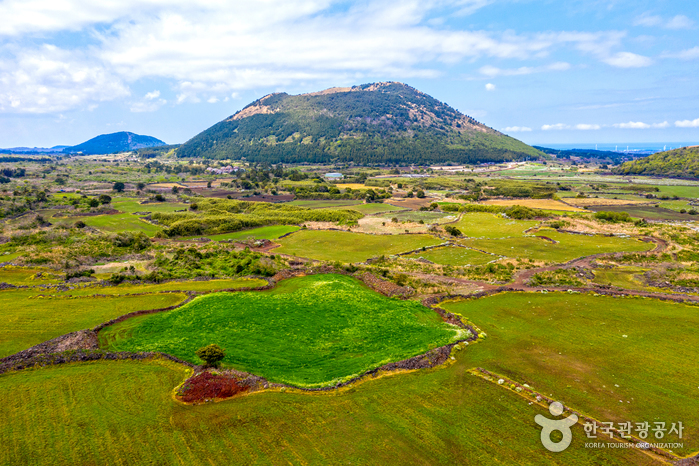
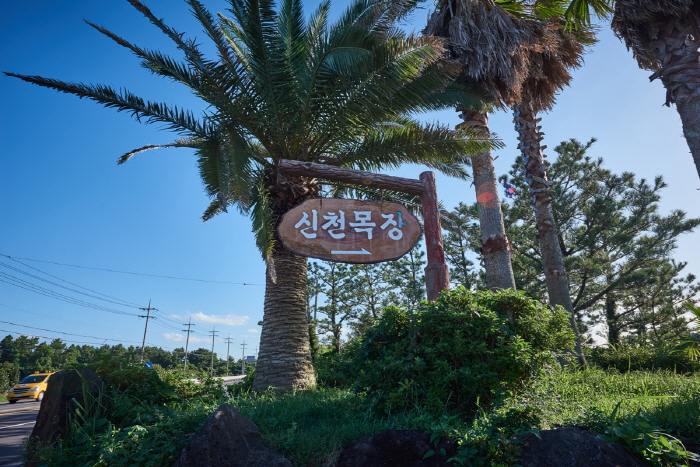
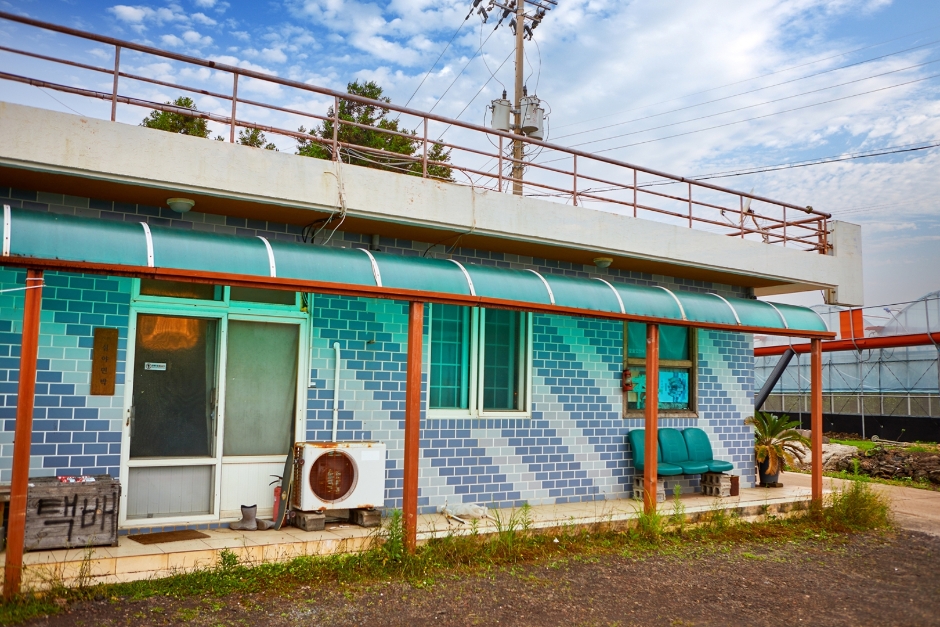
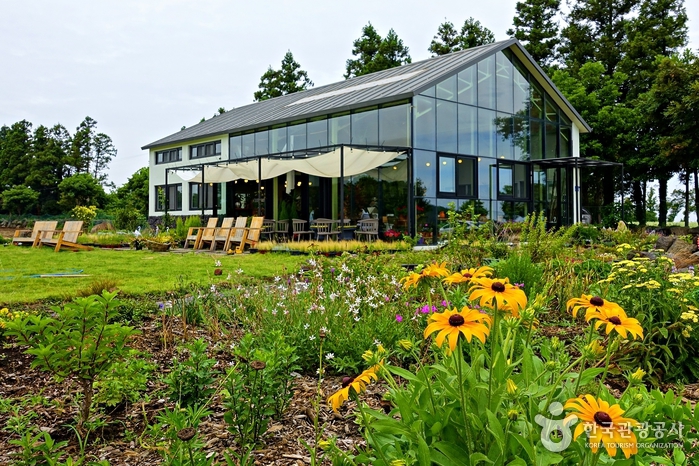
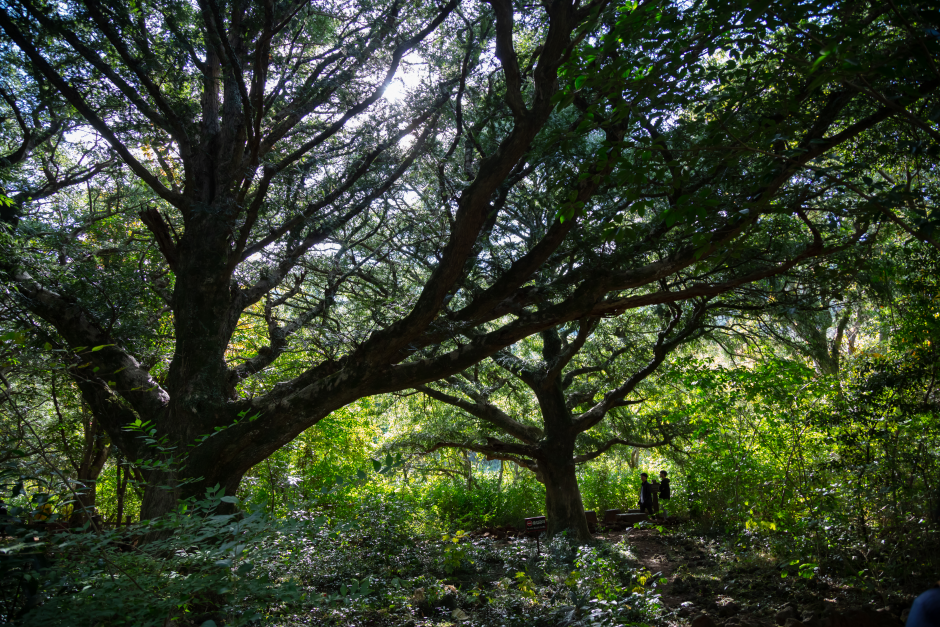
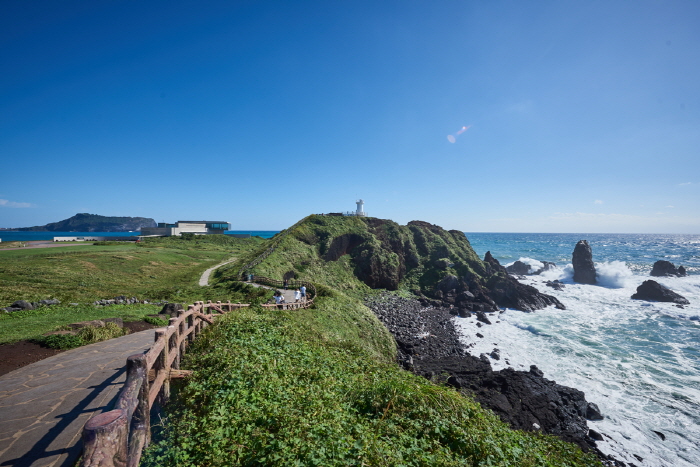
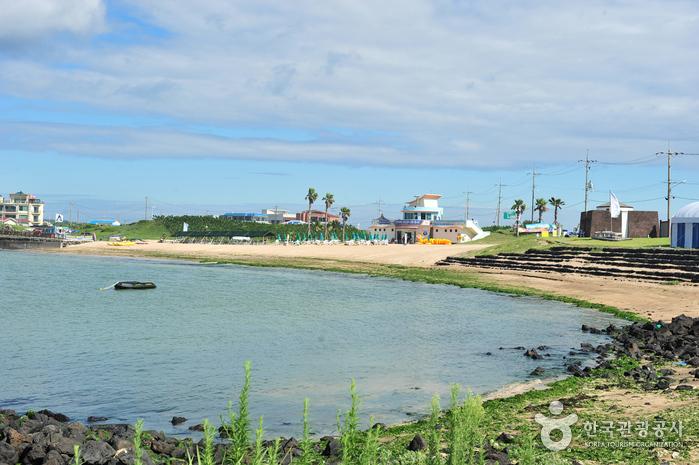
 English
English
 한국어
한국어 日本語
日本語 中文(简体)
中文(简体) Deutsch
Deutsch Français
Français Español
Español Русский
Русский